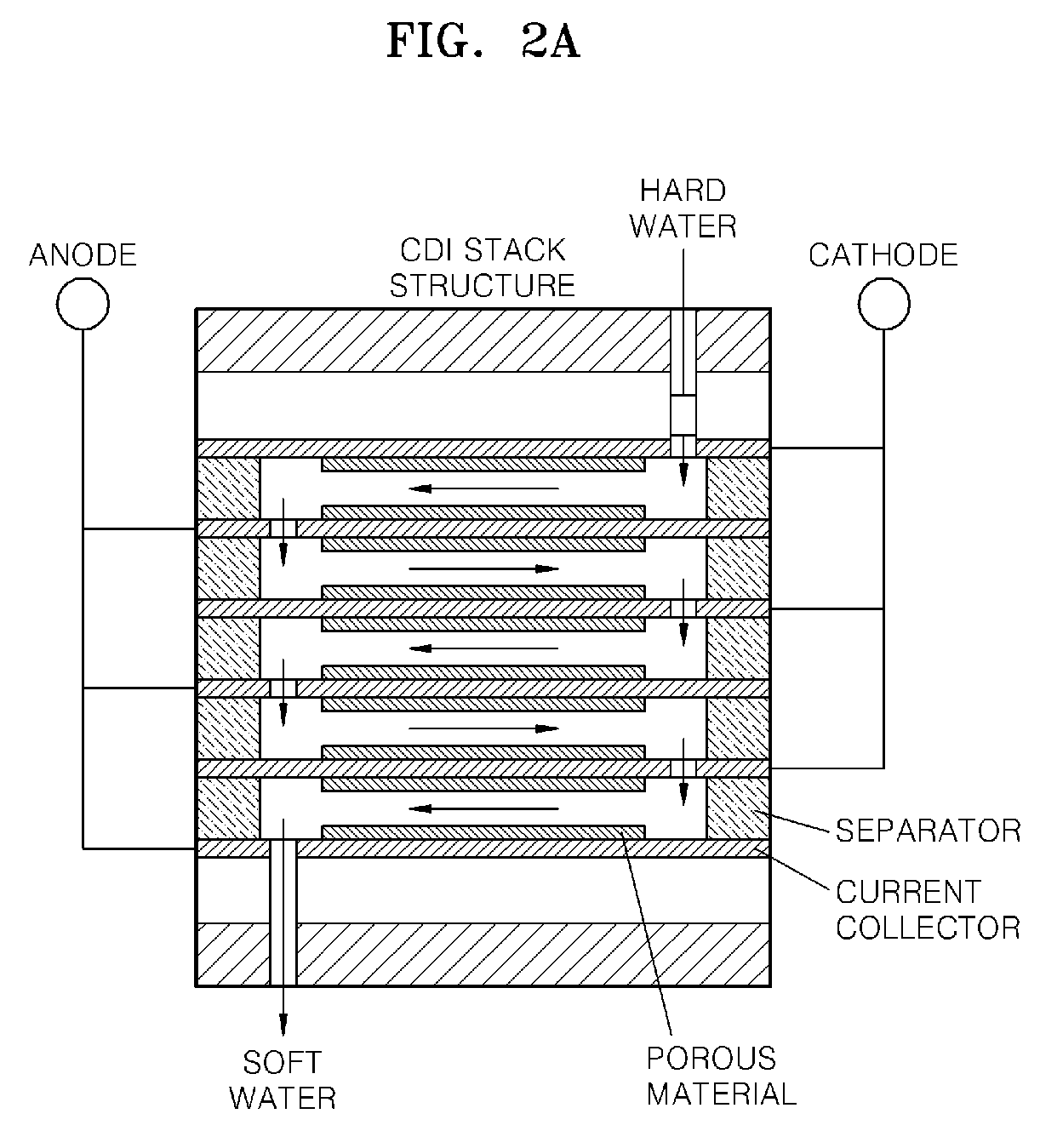Electrode for capacitive deionization device, method of manufacturing the electrode, and capacitive deionization device having the electrode
a capacitive deionization and electrode technology, applied in the direction of centrifuges, separation processes, coatings, etc., can solve the problems of ion exchange resin having a serious drawback with regard to secondary waste, damage to the environment, and induced climatic change, so as to improve the accessibility to electrolytic solutions, improve the effect of electrical conductivity and improve operation efficiency
- Summary
- Abstract
- Description
- Claims
- Application Information
AI Technical Summary
Benefits of technology
Problems solved by technology
Method used
Image
Examples
synthesis example 1
Synthesis of Polyurethane, Which is Dispersible in Water
[0080]99.6 g of isophorone diisocyanate and 11.2 g of dimethylol butanoic acid were added to a 1 L four-neck round-bottomed reactor, and the reactor was slowly stirred under nitrogen atmosphere. 150.0 g of polytetramethylene ether glycol having a weight average molecular weight of 1000 grams per mole was added to the reactor in 2 or 3 stages while the temperature was maintained at 40° C. When the adding process was terminated and the temperature was stabilized, the reactor was heated to 60° C. and reacted until the mixture had a theoretical NCO value. The reaction was performed for about 4 to 6 hours, and the reaction time was varied according to the type of polyol and the amount of ionic groups. When the theoretical NCO value was obtained, the reactor was cooled to 30° C. and triethylamine of the same molar amount as dimethylol butanoic acid was added thereto. The resultant was neutralized for 30 to 40 minutes while the temper...
example 1
Preparation of Electrode and Cell
[0081]1) Preparation of 5% by Weight of Polyurethane Solution
[0082]40% by weight of polyurethane waterborne dispersion prepared by dispersing the polyurethane prepared according to Synthesis Example 1 in water was used. 700 parts by weight of 1-butanol were added to 100 parts by weight of the polyurethane waterborne dispersion to prepare 5% by weight of clear polyurethane solution.
[0083]2) Preparation of Slurry for Electrode Active Material
[0084]0.9 g of active carbon having a specific surface area of 1300 m2 / g and 0.1 g of carbon black were added to a stirring vessel, and then 2 g of the prepared 5% by weight of polyurethane solution was added thereto, and the reactor was stirred in a high speed stirrer for 3 minutes. 1 g of 1 butanol was added thereto, and the reactor was stirred for additional 3 minutes to prepared slurry for electrode active material.
[0085]3) Coating of Slurry for Electrode Active Material
[0086]The slurry for an electrode active ...
PUM
| Property | Measurement | Unit |
|---|---|---|
| temperature | aaaaa | aaaaa |
| temperature | aaaaa | aaaaa |
| temperature | aaaaa | aaaaa |
Abstract
Description
Claims
Application Information
 Login to View More
Login to View More - R&D
- Intellectual Property
- Life Sciences
- Materials
- Tech Scout
- Unparalleled Data Quality
- Higher Quality Content
- 60% Fewer Hallucinations
Browse by: Latest US Patents, China's latest patents, Technical Efficacy Thesaurus, Application Domain, Technology Topic, Popular Technical Reports.
© 2025 PatSnap. All rights reserved.Legal|Privacy policy|Modern Slavery Act Transparency Statement|Sitemap|About US| Contact US: help@patsnap.com



